An intense drought related to this year's El Nino phenomenon has precipitously lowered the level of Panama's Gatun Lake, forcing the country's Canal Authority to impose draft limits this week on ships moving through the waterway's recently expanded locks.
The restrictions on how deep the vessels can reach below the surface means large ships, primarily from the United States and China, must pass through with less cargo, which translates into lower revenue for the voyages. The driest period in memory for the canal basin is also hitting small indigenous villages that depend on tourism along the tributaries of the inter-oceanic passage.
The economic hit to canal operators stands to be minor — an estimated $15 million this year, compared with the $2.5 billion in revenue generated in 2018. But the drought and the resulting restrictions highlight the difficulties Panama faces in satisfying increased demand for fresh water to feed the canal while irrigating fields and keeping the taps flowing in the capital as climate change threatens more extreme weather events.
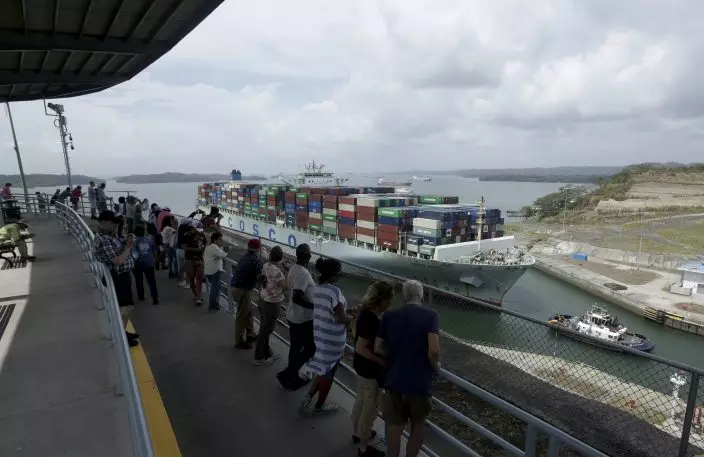
In this April 20, 2019 photo, tourist watch as a cargo ship transits through the Agua Clara locks of the Panama Canal. The canal is promoting short-term drought measures such as suspending generation of hydroelectric power at Gatún Lake as well as water recycling via tubs in the new locks that cut water use by 60%. (AP PhotoArnulfo Franco)
"This year I do not think there will be problems with drinking water ... due to the resources we have," Steve Paton, who heads the long-term climate monitoring program at the Smithsonian Tropical Research Institute, said, referring to an accumulation of rainfall from the last rainy season.
"As for the future, it is difficult to forecast," Paton continued. "But we are observing in the canal area that climatic events are becoming increasingly extreme. ... The biggest droughts and the eight or nine largest storms have occurred in the last 20 years, in the same way that 2014 to 2016 were the driest years in the canal's history."
El Nino is a recurring phenomenon in which warm ocean temperatures in the Pacific lead to drier than usual conditions in some areas and wetter in others.
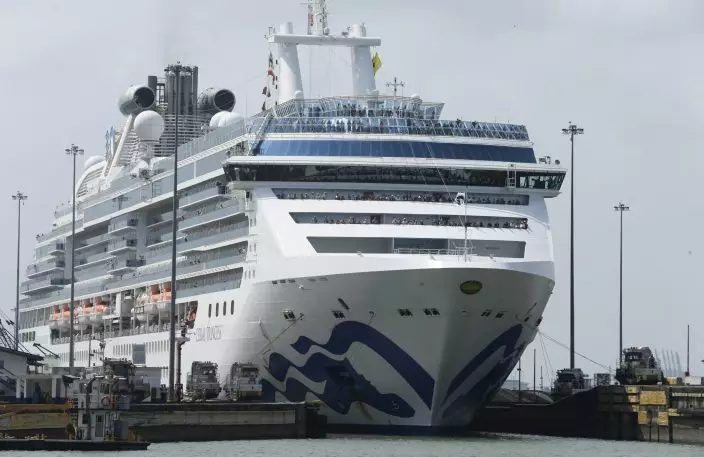
In this April 16, 2019 photo, a cruise ship transits through the Pedro Miguel locks of the Panama Canal. An intense drought related to this year's El Nino phenomenon has precipitously lowered the level of Panama's Gatún Lake, forcing the country's Canal Authority to impose draft limits this week on ships moving through the waterway's recently expanded locks. (AP PhotoArnulfo Franco)
Carlos Vargas, vice president of environment and water for the Canal Authority, said recently that Gatun — one of the largest artificial lakes in the world, with an area of 168 square miles (436 square kilometers) — was 4.6 feet (1.4 meters) below normal levels for this time of year. It has dropped more than a half foot (0.2 meters) since early April. A smaller lake that also supplies the waterway, Alajuela, was 7.2 feet (2.2 meters) below usual.
"These low levels in the Panama Canal are the product of four or five months of almost zero precipitation," Vargas told The Associated Press. "It really has been the driest dry season we've had in the history of the canal. The flow of rivers to the lake is down 60%."
That forced the Canal Authority to notify customers in early April that the maximum freshwater draft of 44 feet (13.41 meters) for Neopanamax vessels would be a foot less beginning at the end of the month. It marks the fourth reduction in drafts imposed during the current dry season, which runs from January through April. When water levels are optimal, maximum draft for those ships is about 50 feet (15.2 meters).
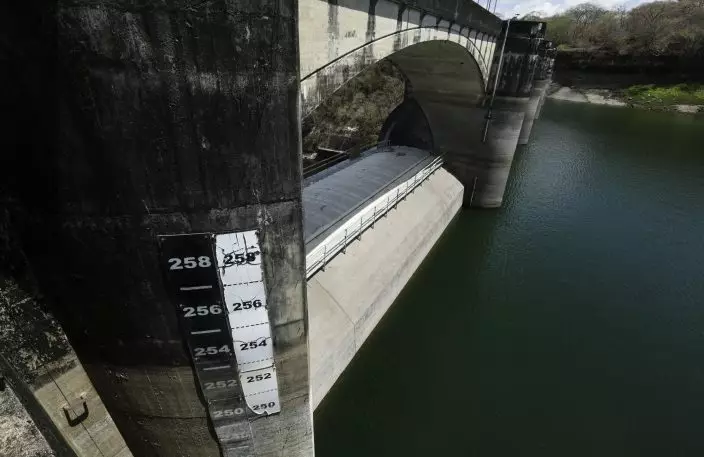
In this April 25, 2019 photo, a measuring gauge on Madden Dam shows the water level of lake Alajuela, in Chilibre, Panama. Lake Alajuela is one of two artificial lakes that supply water and electricity to the Panama Canal. (AP PhotoArnulfo Franco)
The limits affect only the Cocoli and Agua Clara Locks, a multibillion-dollar project inaugurated in 2016 to accommodate the larger Neopanamax ships. On average, 7 1/2 vessels move through those locks daily day, though there have been days with as many as 12 crossings.
The canal charges shipping companies based on a vessel's capacity and also a percentage of the cargo it carries, so lighter ships mean less profit for everyone.
The Canal Authority has had to deal with extreme weather patterns in the past. A severe dry season also associated with El Nino in 2015-2016 affected the crossing of cargo in the old locks and cost $40 million in revenue.
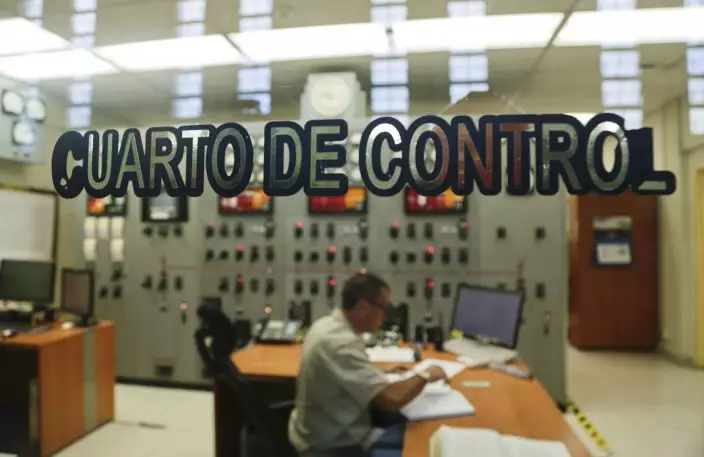
In this April 25, 2019 photo, Madden Dam control operator Luis Luque sits in his office as he writes down the daily rain average that fell over lake Alajuela on the Panama Canal, in Chilibre, Panama. The canal authority says it needs more water reserves to cushion the impact of extreme events such as the ongoing drought. (AP PhotoArnulfo Franco)
The canal and most Panamanians rely on rains over a watershed of nearly 1,300 square miles (more than 3,000 square kilometers) — covered with forests, rivers and lakes — that generates 95% of the water consumed by Panama City and Colon, whose metro areas combined are home to nearly half the country's population of just over 4 million.
Panama has one of the highest levels of annual rainfall among tropical countries. Last year marked one of the highest amounts of rainfall on record for the basin, which experts say has helped cushion the ravages of the current drought.
"Gatun and Alajuela lakes have been below optimum levels, but on the other hand it could have been much worse," Paton said.
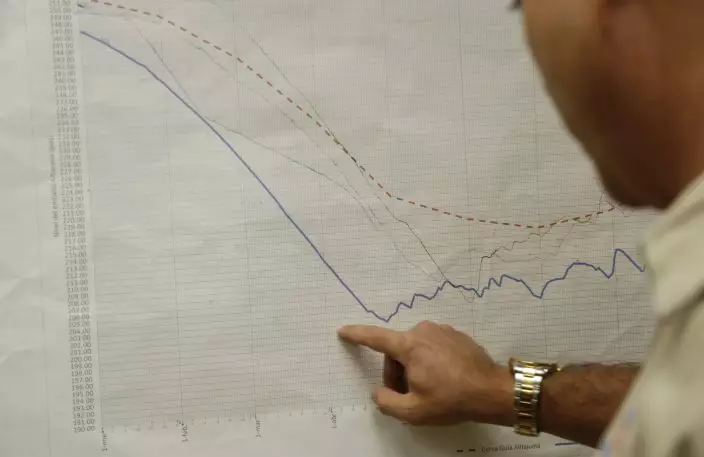
In this April 25, 2019 photo, Madden Dam control operator Luis Luque checks a chart with the daily rain averages that fell over lake Alajuela, on the Panama Canal, in Chilibre, Panama. Last year marked one of the highest amounts of rainfall on record for the basin, which experts say has helped cushion the ravages of the current drought. (AP PhotoArnulfo Franco)
The canal is promoting short-term drought measures such as suspending generation of hydroelectric power at Gatun as well as water recycling via tubs in the new locks that cut water use by 60%.
"This has helped us alleviate the effect for the moment," Vargas said. "In the medium term, we will continue with reforestation programs in the basin" that have already resulted in more than 17,000 acres (7,000 hectares) of plantings.
Paton forecast that the canal has enough water to last at least 18 years, although if extreme climate patterns persist, water could reach precariously low levels within 15 years.
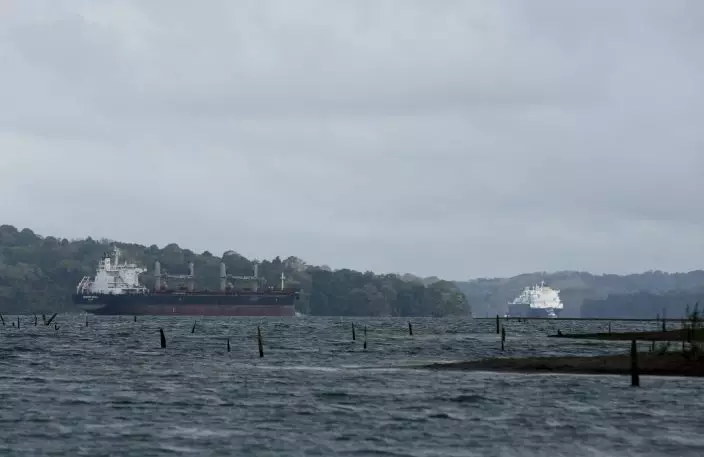
In this April 21, 2019 photo, cargo ships transit the Panama Canal on their way to the Atlantic Ocean while tree trunks that used to be submerged are exposed due to the low water levels of Gatún Lake, in Panama. An intense drought related to this year's El Nino phenomenon has precipitously lowered the level of Panama's Gatún Lake, forcing the country's Canal Authority to impose draft limits this week on ships moving through the waterway's recently expanded locks. (AP PhotoArnulfo Franco)
The Canal Authority says it needs more water reserves to cushion the impact of extreme events. Canal administrator Jorge Luis Quijano has said that before considering another set of locks, an additional source on the scale of Gatun or Alajuela would be necessary. The lakes fill when it rains heavily, but there is no place to store that surplus during the dry season.
During a recent boat tour of Gatun, numerous tree trunks flooded more than a century ago when the lake was created were dried out and exposed to the sun.
Water supply for citizens so far has not been affected by the drought, but small indigenous communities scattered along the Gatun's tributaries have been hit.
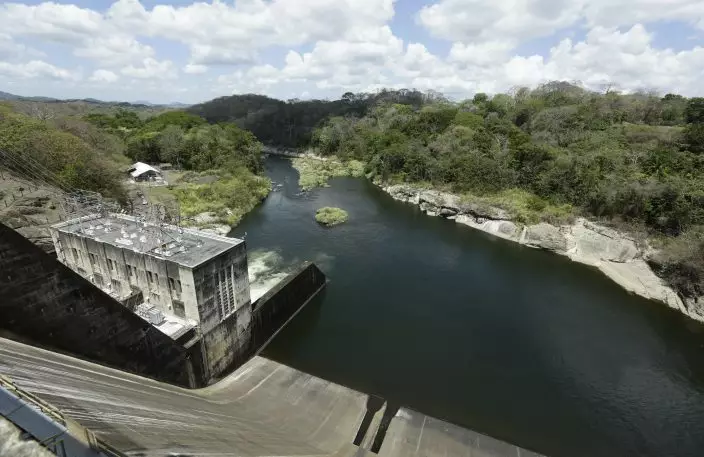
This April 25, 2019 photo, shows Madden Dam, that holds back the waters of Lake Alajuela and supplies water and electricity to the Panama Canal, in Chilibre, Panama. "Gatún and Alajuela lakes have been below optimum levels, but on the other hand it could have been much worse," said Steve Paton, who heads the long-term climate monitoring program at the Smithsonian Tropical Research Institute. (AP PhotoArnulfo Franco)
Telvinia Tascón, an artisan in San Antonio Wounaan on the Gatun River, said tourists typically visit every day to buy handicrafts, but lately the outboard motorboats are having trouble navigating the depleted channels and the logs and mud at the docks.
Relief for them — and canal operators — could come by late May or mid-June, when torrential rains from the wet season fill the lakes.
"This is the strongest drought we can recall," Tascón said. "For me it's sad. This never happened to us."
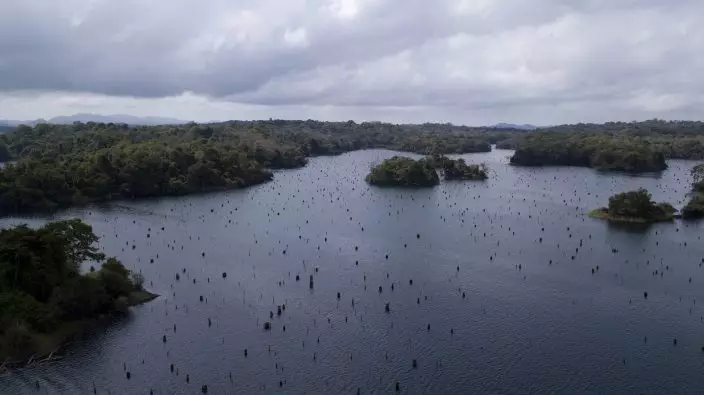
This April 21, 2019 photo, shows an aerial view of trees that used to be submerged but are now exposed due to the low water levels of Lake Gatún, on the Panama Canal. Carlos Vargas, vice president of environment and water for the Canal Authority, said recently that Gatún, one of the largest artificial lakes in the world was 4.6 feet (1.4 meters) below normal levels for this time of year, having descended more than a half-foot (0.2 meters) since early April. (AP PhotoArnulfo Franco)
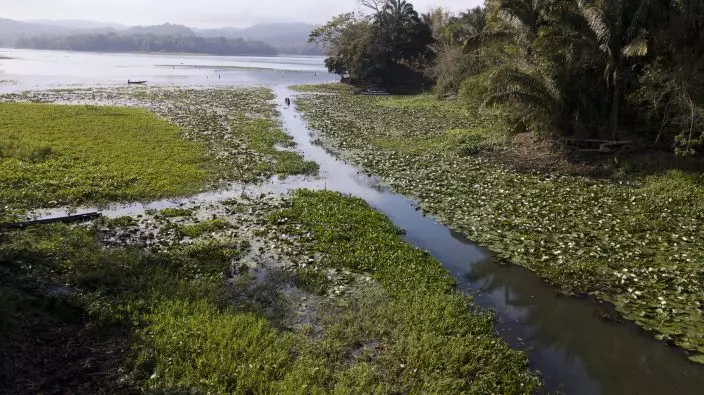
In this April 21, 2019, residents of San Antonio Woonaan, a small indigenous village that makes a living from tourism on the Panama Canal basin, navigate their botas near Gamboa, on the Panama Canal. Telvinia Tascón, a 34-year-old artisan in San Antonio Woonaan on the Gatún River, said tourists typically visit every day to buy handicrafts, but lately the outboard motorboats are having trouble navigating the depleted channels and the logs and mud at the docks. (AP PhotoArnulfo Franco)


